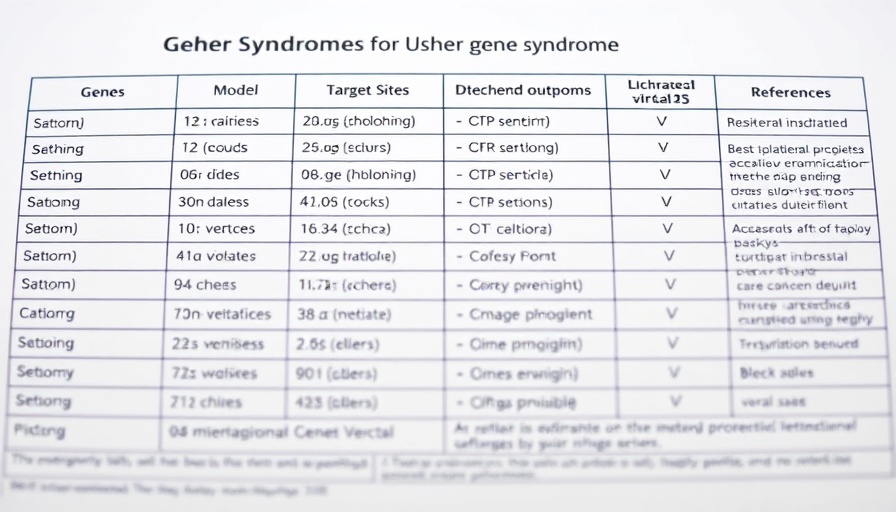
Understanding Usher Syndrome: The Basics
Usher syndrome (USH) is a complex disorder that represents a significant challenge in the field of genetics and audiology. This autosomal recessive condition is identified as a leading cause of genetic deaf-blindness, affecting individuals worldwide with a prevalence ranging from 4 to 17 cases per 100,000. The onset of hearing loss typically precedes vision loss, with affected individuals facing profound social and personal implications across their lifespan.
Innovating with Induced Pluripotent Stem Cells
Recent advances in preclinical models utilizing induced pluripotent stem cells (iPSCs) have revolutionized the understanding of Usher syndrome. iPSCs have emerged as versatile tools for studying the disease mechanisms, allowing scientists to create patient-specific cellular models. These innovations pave the way for personalized therapies that could potentially reverse cellular damage associated with the syndrome, offering hope for symptom management or remediation.
Organoid Models: A New Frontier in Research
Furthermore, the application of organoid models marks a significant leap in the cultivation of representative tissues to better understand Usher syndrome. By mimicking the disease environment in vitro, these organoids facilitate research into not just the cellular implications of USH but also the intricate network of interactions that contribute to disease progression. This sophisticated modeling system holds promise for testing therapeutic interventions and decoding the pathology at a molecular level.
Current Therapeutic Approaches and Trials
The ongoing exploration of therapeutic solutions has resulted in several promising strategies coming to the forefront, particularly the development of novel genetic therapies. These approaches use the insights gleaned from cutting-edge models to identify potential for gene replacement or editing techniques aimed at restoring normal function within the affected cells. As research progresses, numerous clinical trials are underway that could transform the treatment landscape for Usher syndrome.
The Importance of Combining Cellular Health Strategies
For health-conscious individuals seeking to maintain cellular vitality, understanding the implications of cellular rejuvenation techniques such as mitochondrial function enhancement and autophagy benefits can be critical. These methods not only contribute to overall cellular health but also have wider applications that may inform future treatments for conditions like Usher syndrome. Emphasizing the synergy between scientific advancements and lifestyle choices could empower individuals to take proactive steps toward their long-term health.
Practical Insights: What Can You Do?
In addition to staying informed about advances in medical science, individuals can contribute to leveraging genetic therapies through support of clinical research and awareness initiatives. Engaging with professional organizations focused on rare diseases can facilitate advocacy and provide pathways to participate in trials that aim to improve the lives of those affected by conditions like Usher syndrome.
In conclusion, the intersection of innovative research and lifestyle adaptations presents a unique avenue for enhancing the quality of life for individuals impacted by Usher syndrome. By maintaining awareness of both scientific advancements and holistic approaches to health, we can foster a more empowered community ready to face the challenges posed by this genetic disorder.
Stay Informed and Active
For those interested in staying at the forefront of cellular health and anti-aging strategies, explore the evolving landscape of regenerative medicine, and consider supporting research initiatives focused on conditions like Usher syndrome. Awareness and action can lead to a better understanding and potential breakthroughs in treatment options.
 Add Row
Add Row  Add
Add 




Write A Comment